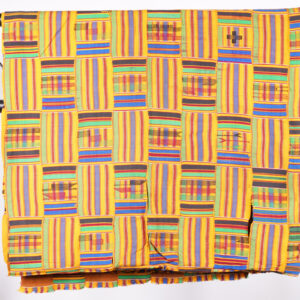“When they arrived on the coast of Ghana in 1471, Portuguese sailors were astonished by the highly structured kingdoms they encountered. This initial contact, along with the area’s reputation for being wealthy, encouraged Westerners to settle in the region and to trade bronze and European-manufactured objects for Ghanaian gold and slaves.”
“The first area, which lies along the coast of the Gulf of Guinea, is a flat plain covered with shrubs occasionally interrupted by lagoons. It is divided into numerous kingdoms of which the most well known are the Fante and the Ewe. The second area includes the central part of the country. It is a forest area where the most renowned tribes is undoubtedly the Asante (also known as the Ashanti). The Asante tribe, as well as other people living in central and south Ghana, speak the Twi language and collectively form the Akan people. The third area, in northern Ghana, is covered by the savannah and is the habitat of Gur-speaking people whose traditions and religions are still poorly understood.”
Sources:
Baquart, Jean-Baptiste. The Tribal Arts of Africa. New York: Thames and Hudson Inc. 1998. Print.
Clarke, Duncan. The Art of African Textiles. San Diego: Thunder Bay Press, 1997. Print.



